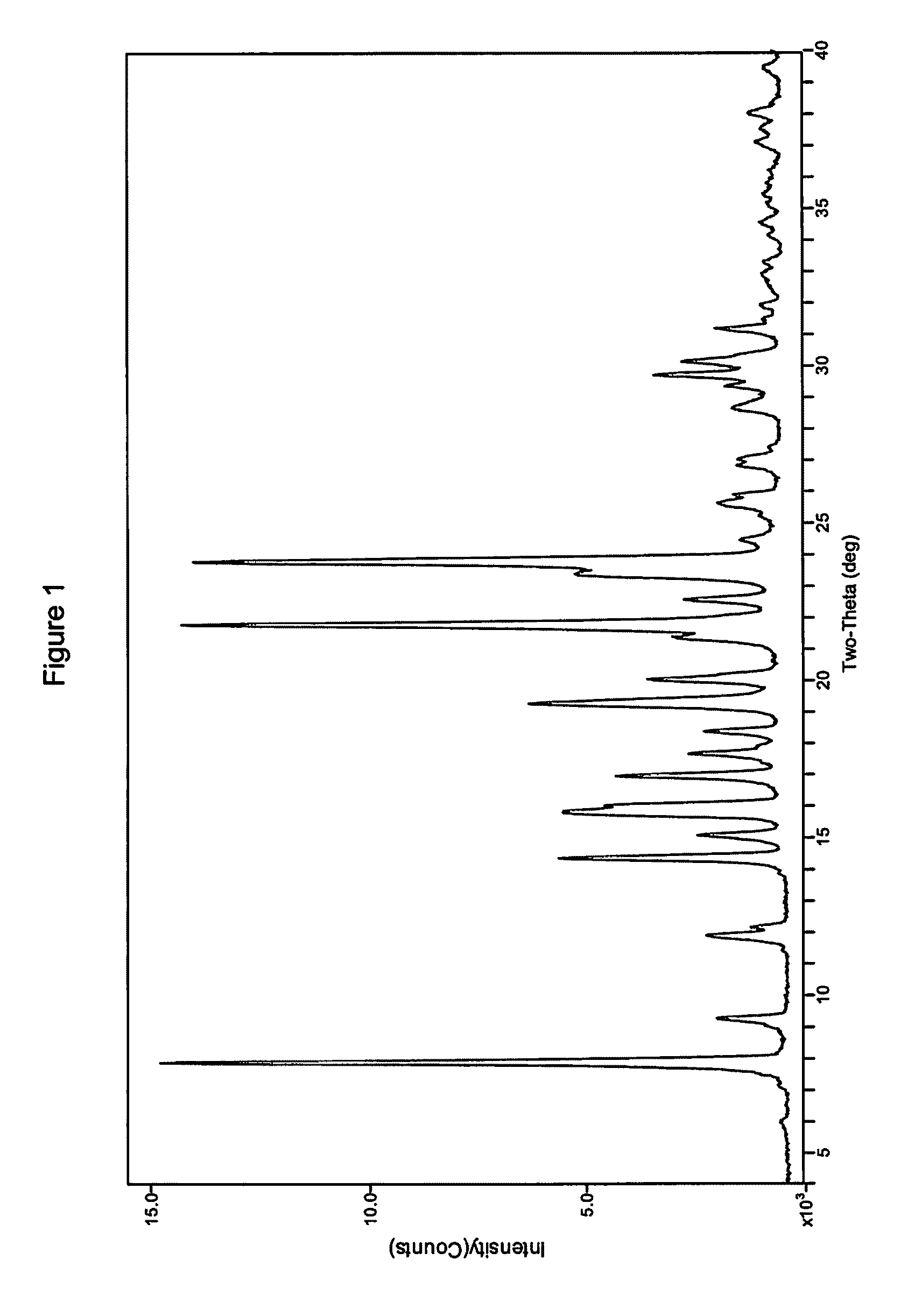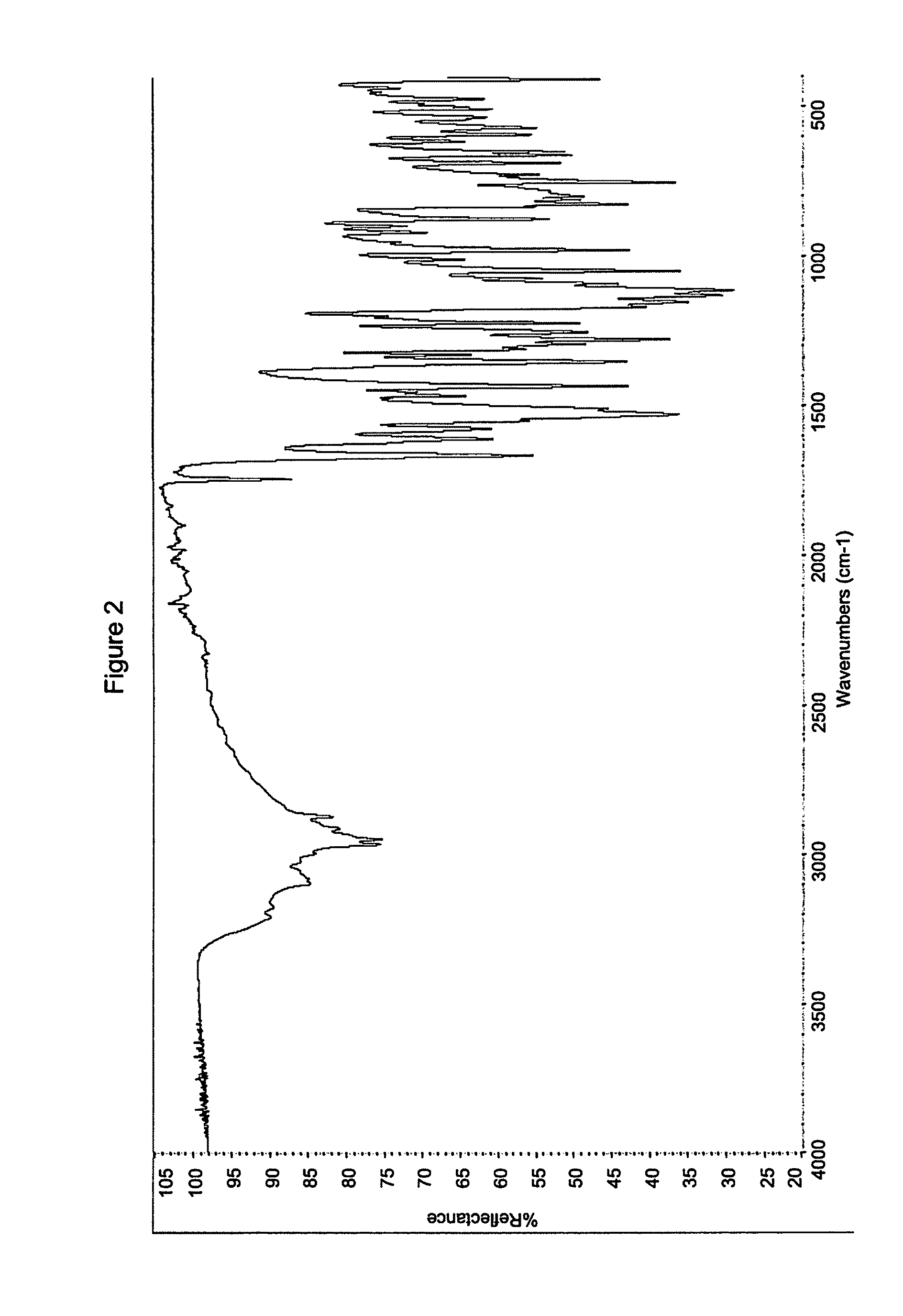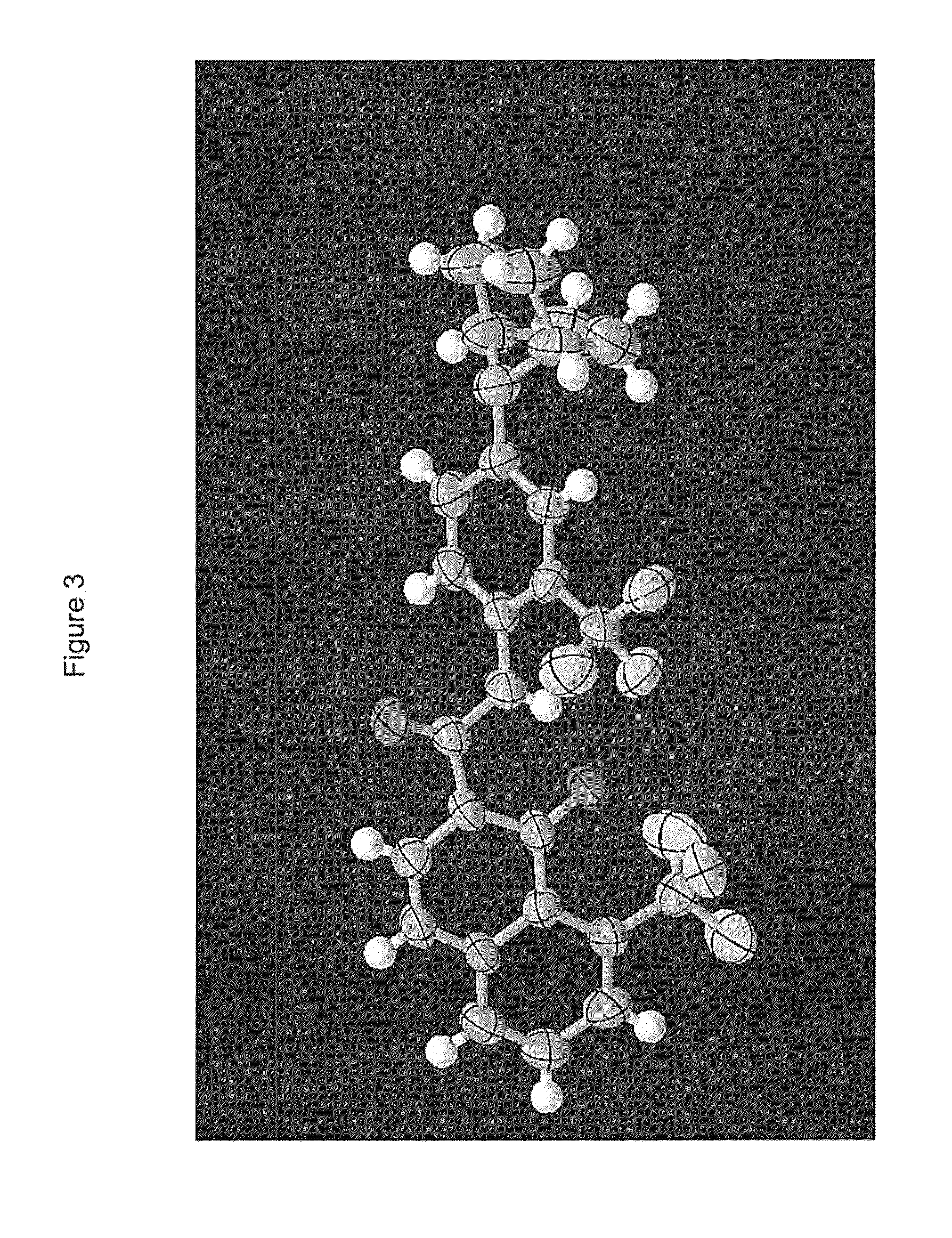Process for preparing modulators of cystic fibrosis transmembrane conductance regulator
a technology of transmembrane conductance regulator and modulator, which is applied in the direction of drug composition, extracellular fluid disorder, metabolic disorder, etc., can solve the problems of cf no cure, and individuals with two copies of the cf associated gene suffer from the debilitating and fatal effects of cf,
- Summary
- Abstract
- Description
- Claims
- Application Information
AI Technical Summary
Benefits of technology
Problems solved by technology
Method used
Image
Examples
example 1a
Preparation of 4-oxo-5-(trifluoromethyl)-1,4-dihydroquinoline-3-carboxylic acid (2)
[0338]
[0339]Preparation of diethyl 2-((2-chloro-5-(trifluoromethyl)phenylamino)methylene)malonate (6B). 2-Chloro-5-(trifluoromethyl)aniline 4 (200 g, 1.023 mol), diethyl 2-(ethoxymethylene)malonate (5) (276 g, 1.3 mol) and toluene (100 mL) were combined under a nitrogen atmosphere in a 3-neck, 1-L round bottom flask equipped with Dean-Stark condenser. The solution was heated with stirring to 140° C. and the temperature was maintained for 4 h. The reaction mixture was cooled to 70° C. and hexane (600 mL) was slowly added. The resulting slurry was stirred and allowed to cool to room temperature. The solid was collected by filtration, washed with 10% ethyl acetate in hexane (2×400 mL) and then dried under vacuum to provide a white solid (350 g, 94% yield) as the desired condensation product diethyl 2-((2-chloro-5-(trifluoromethyl)phenylamino)methylene)malonate (6B). 1H NMR (400 MHz, DMSO-d6) δ 11.28 (d, ...
example 1b
Alternative Preparation of 4-oxo-5-(trifluoromethyl)-1,4-dihydroquinoline-3-carboxylic acid (2)
[0344]
[0345]Preparation of 8-chloro-4-oxo-5-(trifluoromethyl)-1,4-dihydroquinoline-3-carboxylic acid (6D). Ethyl 8-chloro-4-oxo-5-(trifluoromethyl)-1,4-dihydroquinoline-3-carboxylate (6B) (1200 g, 3.754 mol) was charged into a vessel followed by the addition of 2-propanol (1.200 L) and water (7.200 L) and stirred. NaOH (600.6 g, 7.508 mol) and water (1.200 L) were mixed and allowed to cool to room temperature. The resulting NaOH solution was charged into the reaction vessel. The reaction mixture was heated to 80° C. and stirred for 3.5 h generating a dark and homogenous mixture. After an additional hour, acetic acid (9.599 L [of a 20% w / v solution], 31.97 mol) was added via dropping funnel over 45 min. The reaction mixture was cooled to 22° C. at a rate of 6° C. / h with stirring. The resulting solid was filtered, washed with water (3 L) to generate a wet cake of (1436 g). The filtrate was d...
example 2a
Preparation of 4-(7-azabicyclo[2.2.1]heptan-7-yl)-2-(trifluoromethyl)aniline (3)
[0349]
[0350]Preparation of 7-[4-nitro-3-(trifluoromethyl)phenyl]-7-azabicyclo[2.2.1]heptane (9), method 1. To a flask containing 7-azabicyclo[2.2.1]heptane hydrochloride (8-HCl) (4.6 g, 34.43 mmol, obtained from under a nitrogen atmosphere was added a solution of 4-fluoro-1-nitro-2-(trifluoromethyl)benzene (7) (6.0 g, 28.69 mmol) and triethylamine (8.7 g, 12.00 ml, 86.07 mmol) in acetonitrile (50 ml). The reaction flask was heated at 80° C. under a nitrogen atmosphere for 16 h. The reaction mixture was allowed to cool and then was partitioned between water and dichloromethane. The organic layer was washed with 1 M HCl, dried over Na2SO4, filtered, and concentrated to dryness. Purification by silica gel chromatography (0-10% ethyl acetate in hexanes) yielded 7-[4-nitro-3-(trifluoromethyl)phenyl]-7-azabicyclo[2.2.1]heptane (9) as a yellow solid. 1H NMR (400.0 MHz, DMSO-d6) δ 8.03 (d, J=9.1 Hz, 1H), 7.31 (d...
PUM
| Property | Measurement | Unit |
|---|---|---|
| reaction temperature | aaaaa | aaaaa |
| reaction temperature | aaaaa | aaaaa |
| temperature | aaaaa | aaaaa |
Abstract
Description
Claims
Application Information
 Login to View More
Login to View More - R&D
- Intellectual Property
- Life Sciences
- Materials
- Tech Scout
- Unparalleled Data Quality
- Higher Quality Content
- 60% Fewer Hallucinations
Browse by: Latest US Patents, China's latest patents, Technical Efficacy Thesaurus, Application Domain, Technology Topic, Popular Technical Reports.
© 2025 PatSnap. All rights reserved.Legal|Privacy policy|Modern Slavery Act Transparency Statement|Sitemap|About US| Contact US: help@patsnap.com



